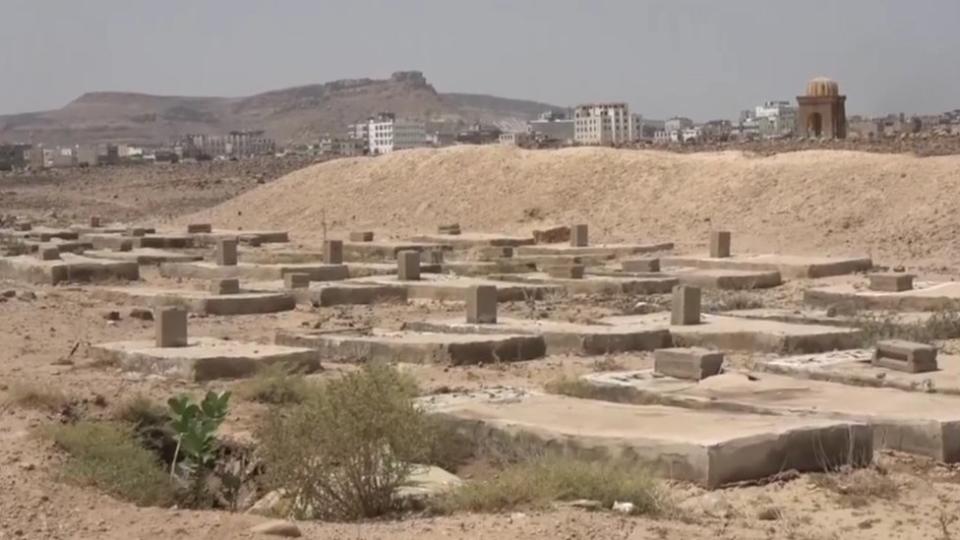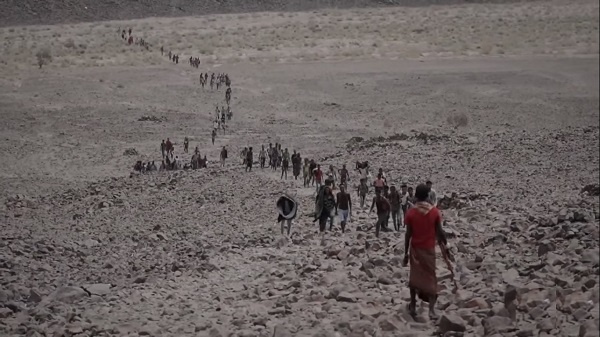
S.Arabia mauls down hundreds of migrants – report
- Graves mark migrant routes
The Human Rights Watch (HRW) has accused the authorities of Saudi Arabia of killing hundreds of migrants along the Yemeni border, an allegation the government denies.
In a new report, the Human Rights Watch declared that many of the migrants who were shot dead were Ethiopians crossing war-torn Yemen to reach Saudi Arabia.

The report, which covers the period from March 2022 to June this year, details 28 separate incidents involving explosive weapons and 14 of shootings at close range.
A BBC report reviewed by The Oracle Today holds that the migrants whose final destinations are clearly stated were either killed or had limbs ripped off by gunfire, leaving blood on the trails.

The HRW report, titled They Fired On Us Like Rain, contains graphic testimony from migrants who say they were shot at and sometimes targeted with explosive weapons by Saudi police and soldiers on Yemen’s rugged northern border with Saudi Arabia.
The migrants spoke of terrifying night-time crossings during which large groups of Ethiopians, including many women and children, came under fire as they attempted to cross the border in search of work in the oil-rich kingdom, according to the BBC report.
Migrants got killed as they tried to sneak across the border in July last year.
The HRW report detailed a brutal, chaotic end to a three-month journey fraught with danger, starvation and violence at the hands of Yemeni and Ethiopian smugglers.
A video filmed by HRW shows a victim with his left foot almost completely severed, later amputated below the knee and now, and ill-fitted with prosthetic limb. The Ethiopian victim is now home with his parents in Ethiopia and walks with assistance of crutches.
According to the UN’s International Organization for Migration, more than 200,000 people a year attempt a perilous journey, crossing by sea from the Horn of Africa to Yemen and then travelling on to Saudi Arabia.
Human rights organisations say many experience imprisonment and beatings along the way.
The sea crossing is dangerous enough, with more than 24 migrants reported missing last week after a shipwreck off the coast of Djibouti.
In Yemen, the main migrant routes are littered with the graves of people who have died along the way.
Dozens of migrants were killed two years ago when fire tore through a detention centre in the capital, Sanaa, run by the country’s Houthi rebels who control most of northern Yemen.
But the abuses outlined in the latest HRW report are different in scale and nature.
The remoteness of the border crossings and the difficulty of tracking down survivors make it impossible to know precisely how many people have been killed, say the authors.
Reports of widespread killings perpetrated by Saudi security forces along the northern border first surfaced last October in a letter by UN experts to the government in Riyadh.
They highlighted “what appears to be a systematic pattern of large-scale, indiscriminate cross-border killings, using artillery shelling and small arms fired by Saudi security forces against migrants.”
Despite the horrific nature of the allegations, the letter went largely unreported.
The Saudi government said it took the allegations seriously but strongly rejected the UN’s characterization that the killings were systematic or large-scale.
“Based on the limited information provided,” the government replied, “authorities within the Kingdom have discovered no information or evidence to confirm or substantiate the allegations.”
But last month, the Mixed Migration Centre, a global research network, published further allegations of killings along the border, based on its own interviews with survivors.
Its report contains graphic descriptions of rotting corpses scattered throughout the border area, captured migrants being asked by Saudi border guards which leg they want to be shot through, and machine guns and mortars being used to attack large groups of terrified people.
The report from Human Rights Watch is the most detailed yet, with multiple eyewitness reports and satellite imagery of the crossing points where many of the killings are said to have taken place, as well as makeshift burial sites.
The report also identifies a detention centre at Monabbih, just inside Yemen, where migrants are held before being escorted to the border by armed smugglers.
According to one migrant interviewed by HRW, Yemen’s Houthi rebels are in charge of security at Monabbih and work alongside the smugglers.
A satellite photo shows bright orange tents packed closely together inside a fenced-off compound.
While the HRW report covers events up to June this year, media investigations uncovered evidence that the killings are continuing.
In the northern city of Saada, footage seen by the BBC shows migrants injured at the border arriving in a hospital as late as Friday. In a nearby cemetery, burials were taking place.



